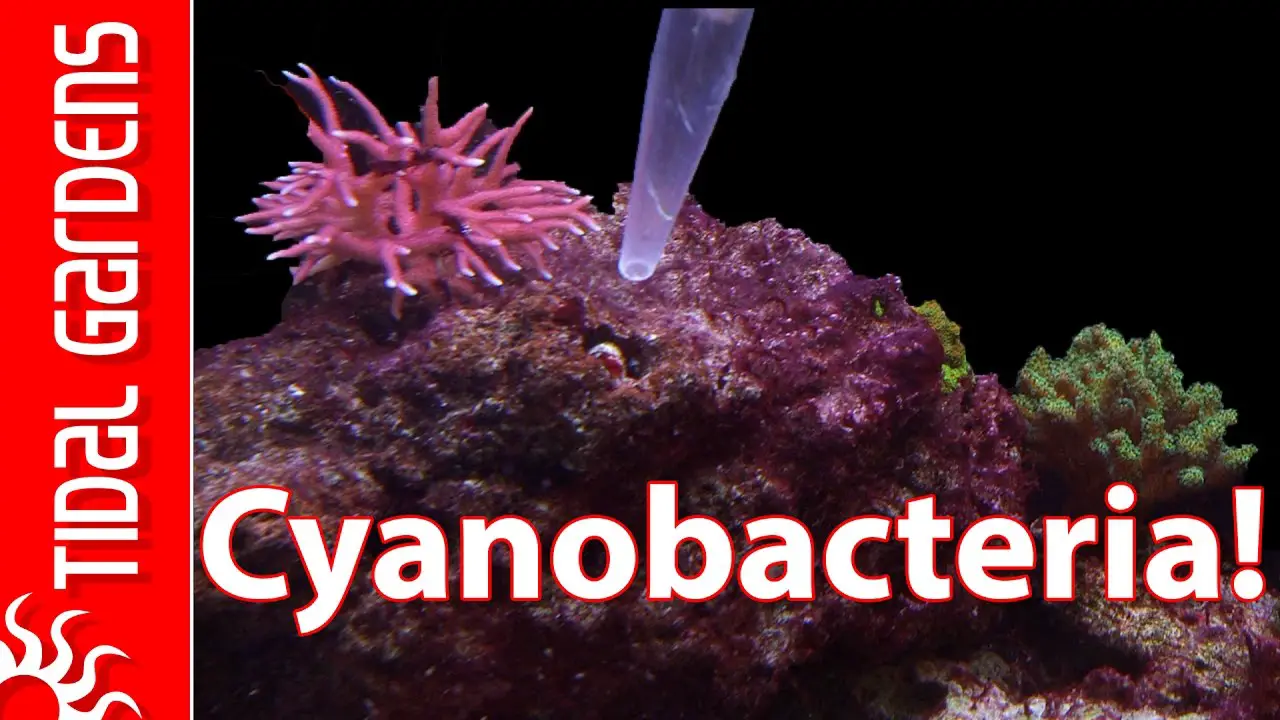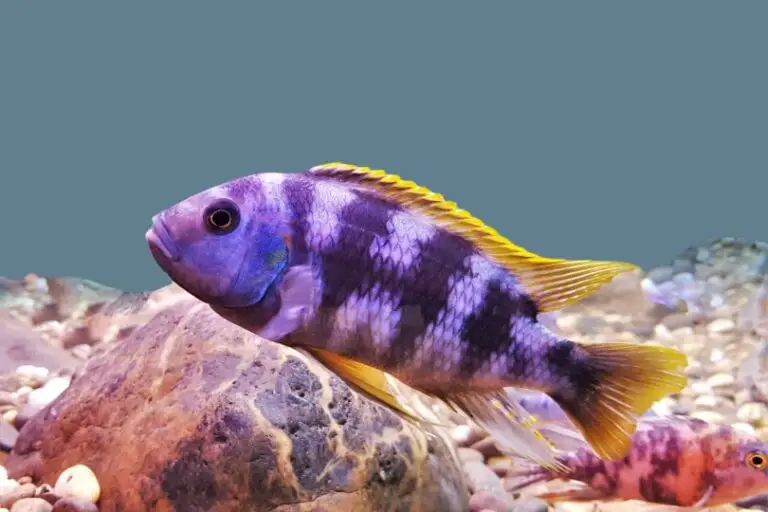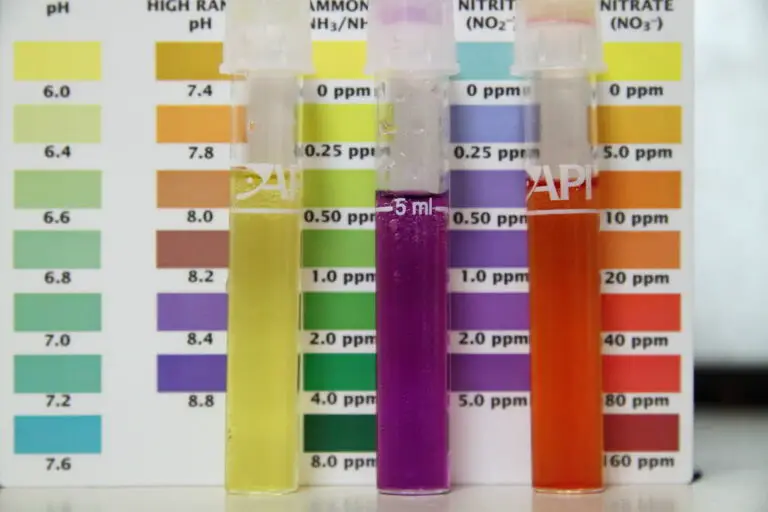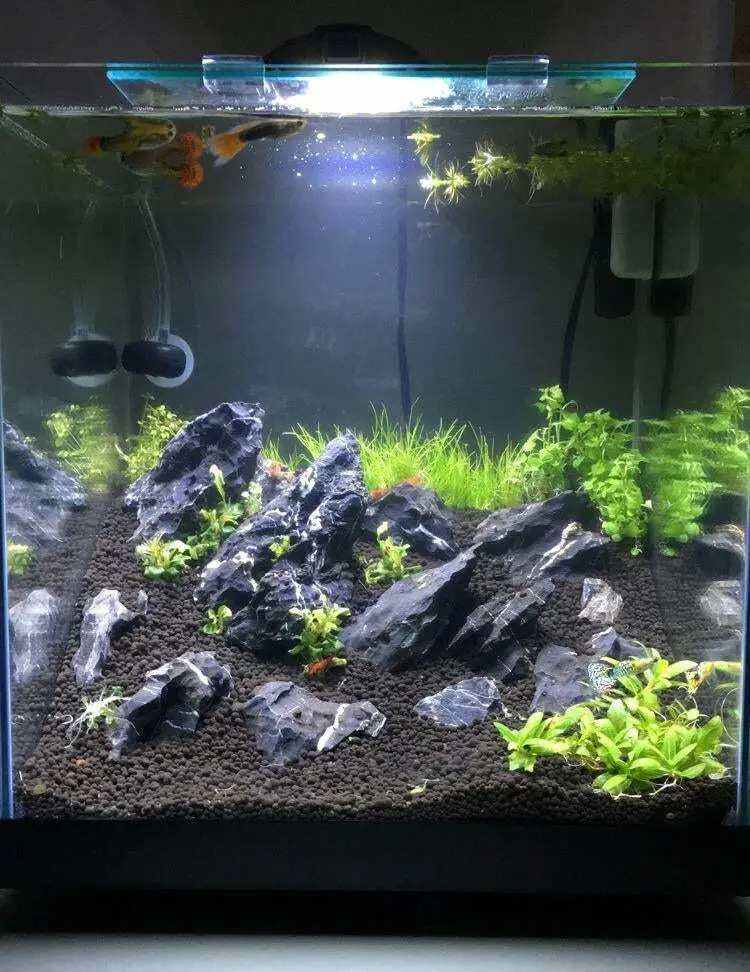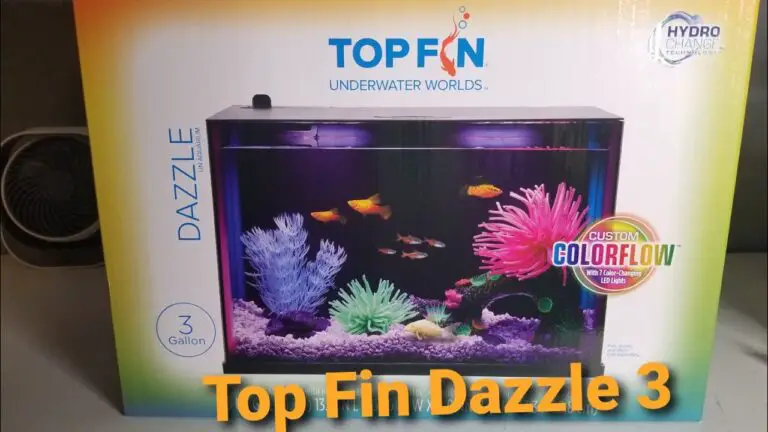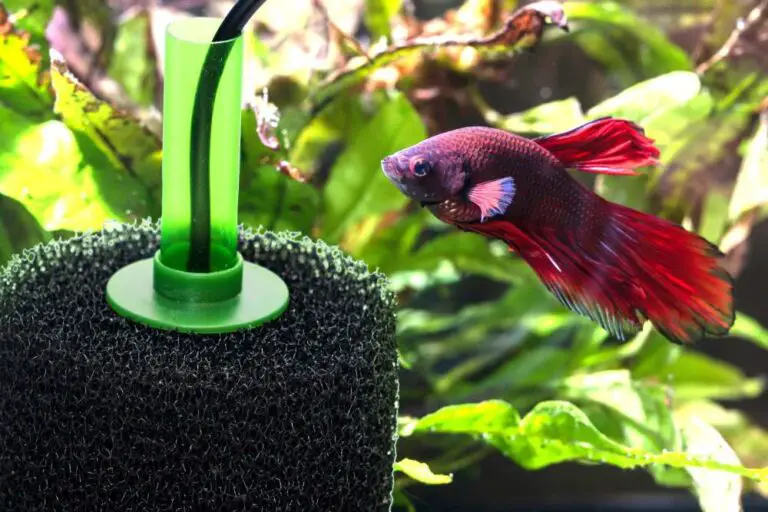How to Get Rid of Red Slime Algae?
Red Slime Algae, or Cyanobacteria as it is also known, can be a nuisance in your aquarium. To get rid of this type of algae you need to take some specific steps. Firstly, reduce the amount of light entering the tank and increase water circulation.
This will create an environment that Red Slime Algae doesn’t thrive in. Secondly, use chemical treatments such as hydrogen peroxide or antibiotics specifically designed for treating Red Slime Algae outbreaks. These treatments should be administered with caution as they can damage other types of aquatic life if used incorrectly.
Finally, manual removal methods such as scrubbing off any visible patches with a soft brush are effective at removing existing colonies before they become too large and out of control. With these steps taken regularly you can keep your aquarium free from Red Slime Algae infestations!
- Reduce Nutrients in the Aquarium: Red slime algae thrive off of high levels of phosphates and nitrates, so it is important to reduce these nutrients as much as possible
- Regularly test your aquarium water for ammonia, nitrites, nitrates and phosphates using a liquid test kit
- Perform regular partial water changes (about 25%) to remove any excess nutrients from the tank
- Additionally, use an activated carbon filter or chemical filtration media to help remove additional nutrient buildup
- Increase Flow in the Tank: Increasing flow around rocks and other surfaces can help limit red slime algae growth by minimizing areas where they can attach themselves and reproduce quickly
- Place powerheads at multiple angles throughout the tank’s corners to create strong currents that will sweep away red slime algae before they can gain a foothold on rockwork or substrate surfaces
- Add Algae Eating Fish: If you find yourself struggling with controlling red slimy algae populations in your tank despite reducing nutrient levels and increasing current flow, adding some specialized fish may be helpful too; certain species such as Sailfin mollies are known for their ability to eat large amounts of algae without harming plants or corals found in reef tanks
- Add one or two fish per 20 gallons of water but keep an eye out for signs of overpopulation within your tank due to increased feeding from these fish
Give Red Saltwater Tank Slime the Boot With the RIGHT Tools!
How Do You Stop Red Slime Algae?
Red slime algae, otherwise known as cyanobacteria, is a type of bacteria commonly found in aquariums that can be difficult to get rid of. The best way to prevent it is by maintaining good water quality and keeping the tank clean. It’s important to perform regular water changes, remove uneaten food and debris from the substrate, vacuum up any excess waste or detritus on the bottom of your tank and make sure you are not overfeeding your fish.
In addition to these basic maintenance practices, there are several treatments available for red slime algae removal. Some popular methods include increasing oxygen levels with air stones or powerheads, adding certain types of filter media such as activated carbon or phosphate remover pads into your filtration system and even using ultraviolet sterilizers which can help reduce populations quickly. If all else fails you may have to resort to manual removal by gently scrubbing away at affected areas with an algae magnet or brush until it is gone completely.
What Causes Red Slime Algae?
Red slime algae, also known as cyanobacteria, is a type of bacteria that can be found in both saltwater and freshwater aquariums. This type of algae is caused by an imbalance in the tank’s chemistry. Factors such as too much light or nutrients may cause it to form.
Poor water quality from inadequate filtration or over-feeding can also contribute to red slime algae growth. Additionally, high levels of nitrates and phosphates are often associated with this type of algae growth; these compounds act like fertilizer for the bacteria enabling them to thrive even more. Red slime algae tends to grow on rocks, substrate (the bottom material), decorations, filter intakes and other surfaces where there is a lot of contact with the water current which helps distribute nutrients evenly throughout the tank.
It’s important to keep up with regular maintenance tasks such as testing your aquarium’s water parameters and performing frequent water changes in order to ensure optimal conditions that prevent excessive red slime algal growth.
What Removes Red Algae?
Red algae, also known as Rhodophyta, are a type of marine plant which can be found in oceans and other bodies of salt water. Red algae is an important part of the ocean’s ecosystem but when it starts to grow out of control it can become a nuisance for aquatic life and beachgoers alike. Fortunately, there are several ways to remove red algae from your pool or aquarium.
One method is to physically remove the plants with a net or by hand; however this only works if you catch them early before they become too entrenched in your system. Another option is chemical removal using products like algaecides that will kill off the red algae without harming any other organisms living in your tank. Finally, some people opt for natural methods such as introducing certain fish species into their tanks which naturally feed on red algae like wrasses and tangs.
Whichever route you take, make sure that all traces of the red algae have been removed so that new growth does not occur again down the line!
What Eats Red Slime Algae?
Red slime algae is a type of nuisance algae that can be difficult to get rid of. Fortunately, there are several animals that feed on this particular type of algae, making them ideal solutions for aquarium owners trying to keep their tanks clean and free from these unsightly organisms. Some examples include tangs (such as the sailfin or yellow tang), wrasses (like the six-line wrasse or purple firefish) and certain species of shrimp like the peppermint shrimp.
Tangs, in particular, are great at grazing over rocks and other surfaces where red slime tends to accumulate. These fish will use their specialized teeth to scrape off any accumulated growth without damaging your tank’s décor or inhabitants. Although some aquarists may not want larger fish in their tanks due to space constraints, there are also many smaller creatures that can help with keeping red slime in check such as blennies, gobies and even certain types of snails like Turbo Snails which specialize in eating pestilent algaes found in marine set ups.
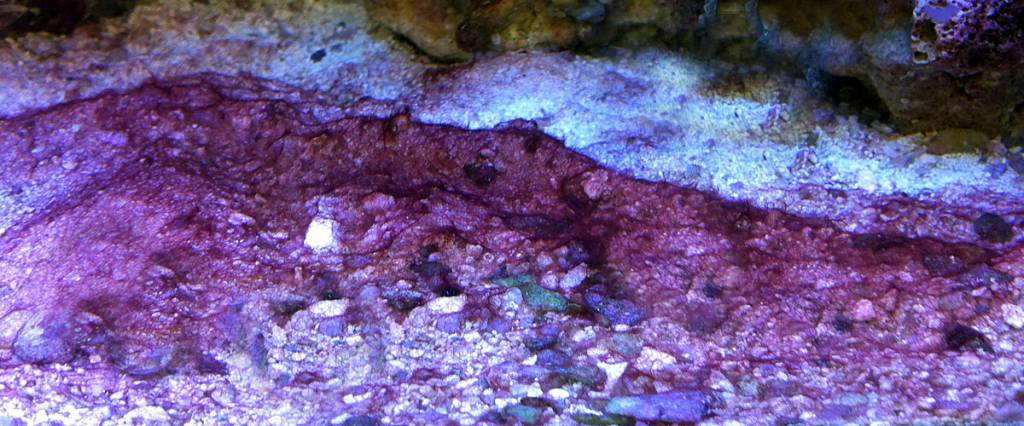
Credit: www.aquariumillusions.com
Red Slime Algae Remover
Red Slime Algae Remover is a powerful chemical solution designed to quickly and effectively remove red slime algae from saltwater aquariums. It works by breaking down the slimy biofilm that red slime algae build up, eliminating the nuisance and helping restore balance in your tank. Red Slime Algae Remover is safe for use with all reef-safe fish, invertebrates, and plants, making it an ideal choice for maintaining clean tanks without worry of harming your aquatic life.
What Causes Red Algae in Saltwater Tank
Red algae in a saltwater tank can be caused by several factors, including high nitrate levels, overstocking of fish or invertebrates, inadequate water flow or filtration, and/or too much light. High nitrates are one of the most common causes of red algae growth as they provide an ideal environment for its proliferation. Additionally, if there is overcrowding in the tank then this can lead to reduced oxygen levels which further promotes red algae growth.
Lastly, insufficient water flow and filtration can leave debris and organic matter suspended in the tank that encourages the growth of unwanted organisms such as red algae.
Is Red Slime Algae Bad for Fish
Red Slime Algae, or Cyanobacteria, can be detrimental to fish and other aquatic life if it’s not managed properly. The bacteria produce toxins that are deadly to many species of fish and invertebrates, so it’s important to take steps towards controlling the algae in any aquarium. Regular water changes and maintaining a healthy balance of nutrients can help prevent an outbreak of Red Slime Algae.
How to Get Rid of Red Algae in Saltwater Tank
Red algae can be difficult to remove from a saltwater tank, but it is possible with some patience and diligence. Begin by removing as much of the visible red algae as you can by manually wiping down any surfaces that are affected. Then, perform regular water changes and add a phosphate remover to your tank in order to reduce phosphates which fuel the growth of red algae.
Finally, increase circulation in the tank using an aquarium powerhead or other equipment if needed. With these steps, you should be able to successfully eliminate red algae from your saltwater tank!
Red Cyanobacteria
Red Cyanobacteria are one of the oldest and most abundant organisms on Earth. They have been around for billions of years, and they can be found in almost any environment where there is water or moisture. These tiny bacteria use light to produce oxygen as a byproduct of photosynthesis, making them an important part of our planet’s ecosystem.
Red Cyanobacteria are also used extensively in biotechnology research due to their ability to take up genetic material from other organisms and express it inside their own cells.
Red Algae in Aquarium Freshwater
Red algae can be a common problem in established freshwater aquariums. It is typically found growing on the sides of tanks and on rocks, plants, ornaments, and other surfaces. Red algae has a red-brownish coloration to it and appears like small threads that are tangled together.
This type of algae can cause oxygen deficiencies in an aquarium which causes poor water quality and potentially harm the fish living in the tank. To prevent red algae from appearing, regular maintenance such as frequent water changes should be done to keep nitrate levels low as well as keeping lighting intensity within recommended levels for your particular species of fish.
What Eats Red Algae in Saltwater Tank
Red algae can be quite a nuisance in saltwater tanks, but luckily there are several creatures that feed on it. Some of the most common organisms that eat red algae include sea stars, snails (such as Nerite and Nassarius), crabs (including hermit crabs and emerald mithrax crabs), or other varieties of shrimp like peppermint or skunk cleaner shrimp.
Is Red Algae Bad in Saltwater Tank
Red algae, also known as red slime algae, is an unwelcome sight in many saltwater tanks. While it doesn’t cause any direct harm to the inhabitants of the tank, it can quickly overgrow and crowd out desirable plants and coral colonies. To prevent the spread of red algae in a saltwater tank, regular water changes should be performed as well as proper nutrient control and careful monitoring of light levels.
Conclusion
Red slime algae is an unsightly problem that can take over your aquarium, but with the right approach, it doesn’t have to be a permanent one. By understanding the cause and taking preventive steps such as performing regular water changes and avoiding overfeeding, you can keep red slime algae from returning. Additionally, physical removal methods like siphoning or scrubbing can help get rid of existing infestations quickly.
With some patience and diligence on your part, you’ll soon have a tank free of pesky red slime algae!
